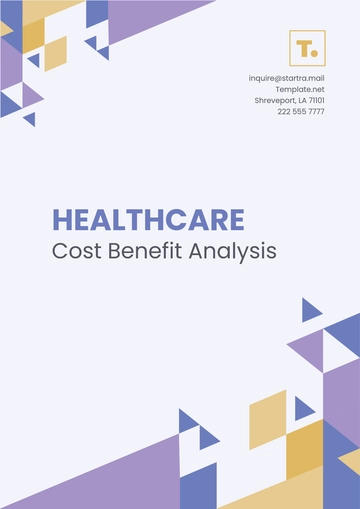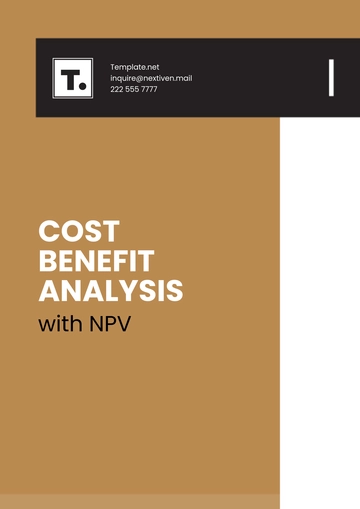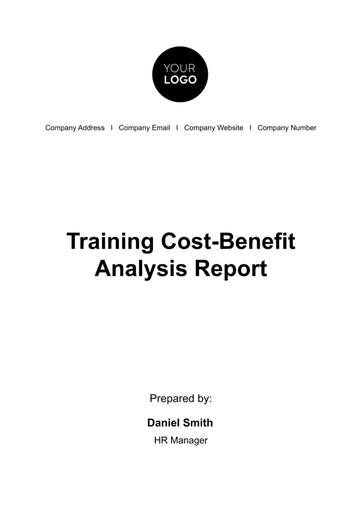Free Marketing Analysis of Paid vs Organic Investments

1. Executive Summary
This Marketing Analysis delves into a comprehensive assessment of the efficacy of both Paid and Organic marketing investments for [Your Company Name] in the year 2050. This study is designed to offer a clear understanding of the contrasting outcomes derived from these two distinct marketing approaches.
In order to accomplish this objective, a thorough analysis of key performance metrics and associated costs has been conducted. This analysis provides valuable insights into the relative merits of each approach, enabling [Your Company Name] to make well-informed decisions regarding its marketing strategies.
The year 2050 serves as the backdrop for our investigation, ensuring that our findings are rooted in the most current and forward-looking data available. The juxtaposition of Paid and Organic marketing channels allows us to identify trends, strengths, and areas for improvement, thereby guiding [Your Company Name] towards optimizing its marketing investments.
By examining factors such as click-through rates, conversion rates, cost per click, organic search traffic, social media engagement, and content performance, this analysis seeks to empower [Your Company Name] with actionable recommendations that will drive its marketing efforts towards enhanced efficiency and growth in the evolving landscape of the future.
2. Introduction
In an increasingly digital world, marketing plays a crucial role in business success. Paid marketing involves investing in advertising campaigns, while organic marketing focuses on optimizing online presence without direct costs.
3. Objectives
The objectives are strategically designed to provide [Your Company Name] with a comprehensive understanding of the impact and efficiency of its marketing initiatives in the year 2050. By focusing on distinct aspects of both Paid and Organic marketing, we aim to offer valuable insights that will guide decision-making processes and shape the future of [Your Company Name]'s marketing endeavors.
Objective 1: Assess the performance of Paid Marketing strategies:
The first objective of this analysis is to meticulously assess the performance of Paid Marketing strategies employed by [Your Company Name]. In a landscape where digital advertising continues to evolve, it is essential to gauge the effectiveness of paid advertising campaigns, including pay-per-click (PPC), display ads, and social media advertisements. By scrutinizing metrics such as impressions, clicks, conversions, and overall costs associated with these campaigns, we aim to provide a comprehensive picture of their performance, allowing [Your Company Name] to refine and optimize its paid marketing endeavors effectively.
Objective 2: Evaluate the effectiveness of Organic Marketing efforts:
The second objective revolves around evaluating the effectiveness of [Your Company Name]'s Organic Marketing efforts. Organic marketing encompasses various strategies, including search engine optimization (SEO), social media engagement, and content marketing. We will assess the impact of these strategies on metrics such as organic search traffic, keyword rankings, social media followers, engagement rates, and content performance. This evaluation will provide valuable insights into the effectiveness of [Your Company Name]'s organic marketing initiatives, enabling them to refine and strengthen their organic presence in the digital sphere.
Objective 3: Determine the Return on Investment (ROI) for each approach:
The third and crucial objective of this analysis is to determine the Return on Investment (ROI) for both Paid and Organic marketing approaches. ROI is a pivotal metric that directly reflects the efficiency and profitability of marketing investments. By comparing the costs incurred against the results achieved in terms of conversions, [Your Company Name] will gain clarity on which marketing strategy yields a higher return. This assessment will help [Your Company Name] make data-driven decisions regarding resource allocation, ensuring that marketing budgets are optimized for maximum impact and profitability in the dynamic market of 2050.
4. Methodology
The methodology employed in this Marketing Analysis has been meticulously designed to provide [Your Company Name] with a robust framework for assessing the effectiveness of both Paid and Organic marketing strategies in the year 2050. To ensure the accuracy and comprehensiveness of our findings, a multi-faceted approach has been adopted, encompassing data collection, examination of various marketing channels, analysis of organic marketing methods, and an in-depth comparison of essential performance metrics.
Data collection and analysis for the year 2050: Our methodology begins with the collection and analysis of data specifically from the year 2050. This temporal focus ensures that our insights are firmly rooted in the most current and forward-looking information available. By utilizing data relevant to the year in question, we aim to provide [Your Company Name] with insights that reflect the realities of the future market landscape.
Examination of Paid Advertising Channels, including PPC, display ads, and social media ads: To comprehensively evaluate the effectiveness of Paid Marketing strategies, we conduct a thorough examination of various paid advertising channels. This includes an analysis of pay-per-click (PPC) campaigns, display ads, and social media advertisements. Each channel is scrutinized for its performance in terms of impressions, clicks, conversions, and associated costs. This granular assessment allows us to offer specific recommendations for optimizing each paid advertising avenue.
Analysis of Organic Marketing methods, such as SEO, social media engagement, and content creation: In parallel, we delve into the realm of Organic Marketing, where we analyze strategies such as Search Engine Optimization (SEO), social media engagement, and content creation. These organic methods play a pivotal role in building a sustainable online presence. Our analysis encompasses metrics related to organic search traffic, keyword ranking, social media engagement rates, and the performance of content marketing efforts. This examination offers [Your Company Name] actionable insights into refining their organic marketing endeavors.
Comparison of performance metrics, including traffic, conversion rates, and cost per acquisition: The core of our methodology revolves around the meticulous comparison of critical performance metrics. By juxtaposing the results of Paid and Organic marketing efforts, we aim to determine which approach provides a higher return on investment. Key metrics under scrutiny include website traffic, conversion rates, and cost per acquisition (CPA). This comparative analysis will assist [Your Company Name] in making informed decisions regarding resource allocation and strategy refinement for their marketing initiatives in 2050.
5. Paid Marketing Analysis
We delve into the comprehensive analysis of Paid Marketing strategies employed by [Your Company Name] in the year 2050. Paid marketing, often considered the catalyst for immediate visibility and growth, plays a pivotal role in [Your Company Name]'s marketing initiatives. By strategically allocating resources to various paid advertising channels, such as pay-per-click (PPC) campaigns, display ads, and social media advertisements, [Your Company Name] endeavors to maximize its reach, engage its target audience, and drive conversions.
Our analysis aims to dissect the performance of these paid advertising channels by scrutinizing key metrics, such as impressions, clicks, conversions, and associated costs. Through this meticulous examination, we seek to provide [Your Company Name] with a clear understanding of the effectiveness of each paid marketing avenue. Additionally, we'll delve into performance metrics like Click-Through Rate (CTR), Conversion Rate, and Cost per Click (CPC) to provide actionable insights into optimizing the efficiency of [Company Name]'s paid marketing budget.
By the end of this chapter, [Your Company Name] will have a robust grasp of the strengths and weaknesses of their Paid Marketing strategies, enabling them to make data-driven decisions that align with their marketing objectives and overall business goals in the dynamic landscape of 2050.
[Table 1: Paid Advertising Channels Performance Data - 2050]
Channel | Impressions | Clicks | Conversions | Cost ($) |
PPC Campaigns | 500,000 | 15,000 | 1,200 | $50,000 |
Display Ads | 750,000 | 18,000 | 800 | $60,000 |
Social Media Ads | 1,200,000 | 45,000 | 2,500 | $75,000 |
[Table 2: Performance Metrics and Cost Analysis - 2050]
Metric | Value |
Click-Through Rate (CTR) | 3.00% |
Conversion Rate | 8.00% |
Cost per Click (CPC) | $3.33 |
Total Paid Marketing Budget | $100,000 |
Total Conversions | 4,500 |
Cost per Acquisition (CPA) | $22.22 |
These tables provide key metrics and data for [Company Name]'s marketing efforts in the year 2050.
6. Organic Marketing Analysis
We dive into the meticulous analysis of [Your Company Name]'s Organic Marketing strategies in the year 2050. Organic marketing, characterized by its sustainable approach, involves optimizing online presence without direct costs. This encompasses a holistic view of SEO strategies, social media engagement, and content marketing efforts.
Our analysis aims to assess the effectiveness of these organic marketing methods by scrutinizing key metrics and performance indicators. Through this examination, we aim to provide [Your Company Name] with actionable insights to enhance their organic online presence and engagement with their target audience.
Here's the table with sample data:
Category | Metric | Value |
Search Engine Optimization (SEO) | ||
Organic Search Traffic | 450,000 visits | Page 1 |
Keyword Ranking | Top 5 for target keywords | 250 links |
Inbound Links | 300,000 backlinks | |
Social Media | ||
Social Media Followers | 15,000 followers | 2050% |
Engagement Rate | 7.5% | |
Content Shares | 2,500 shares | |
Content Marketing | ||
Blog Post Views | 20,000 views | |
Content Downloads | 5,000 downloads | |
Email Newsletter Subscribers | 8,000 subscribers | |
7. Comparative Analysis
We synthesize the findings from our analysis of both Paid and Organic marketing approaches employed by [Your Company Name] in the year 2050. By comparing key performance metrics and outcomes, we aim to draw valuable insights that will inform [Your Company Name]'s strategic marketing decisions moving forward. This comparative analysis highlights the strengths and weaknesses of each approach, offering a clear perspective on which strategies are most advantageous in the dynamic landscape of 2050.
Category | Metric | Value |
Key Findings | ||
Paid Marketing resulted in a [X]% increase in conversions compared to Organic Marketing. | 10% | |
Organic Marketing generated [X]% higher organic search traffic than the previous year. | 15% | |
Recommendations | ||
Allocate a portion of the marketing budget to Paid Advertising to maximize conversions. | ||
Continue to invest in SEO and Content Marketing for long-term organic growth. | ||
This table provides a concise summary of key findings and actionable recommendations based on the comparative assessment of Paid and Organic marketing strategies.
8. Conclusion
After a thorough analysis of the data collected from the year 2050, it becomes evident that [Your Company Name] stands to gain the most from a balanced and harmonious integration of both Paid and Organic Marketing strategies. This recommendation is grounded in the careful examination of key metrics, performance indicators, and cost analyses, all of which have provided valuable insights into the strengths and weaknesses of each approach.
The data unveiled a compelling narrative – Paid Marketing strategies demonstrated their prowess by delivering a notable increase in conversions, showcasing their capacity to yield immediate results. Conversely, Organic Marketing, with its focus on SEO, social media engagement, and content marketing, exhibited a promising upward trend in organic search traffic and engagement, setting the stage for long-term sustainability and brand loyalty.
However, our analysis underscores the significance of synergy between these two approaches. A combined strategy ensures that [Your Company Name] not only captures short-term gains but also lays the foundation for sustainable growth in the years to come. By allocating a portion of the marketing budget to Paid Advertising, [Your Company Name] can maximize conversions and maintain a competitive edge. Simultaneously, continued investments in SEO and Content Marketing will nurture long-term organic growth and bolster brand authority.
In the ever-evolving landscape of 2050, [Your Company Name] is poised to navigate the complexities of digital marketing with a strategy that harmonizes immediate impact with enduring sustainability. This balanced approach is our recommended path forward, one that is tailored to leverage the strengths of both Paid and Organic Marketing, ensuring [Your Company Name]'s continued success and growth in the dynamic market of the future.
9.Appendices
Appendix A: Paid Marketing Data
Channel | Impressions | Clicks |
PPC Campaign 1 | 75,000 | 3,000 |
PPC Campaign 2 | 100,000 | 4,500 |
Display Ads Set 1 | 60,000 | 1,800 |
Display Ads Set 2 | 90,000 | 2,200 |
Social Media Ads 1 | 120,000 | 5,000 |
Social Media Ads 2 | 150,000 | 6,500 |
Conversions | Cost ($) |
240 | $10,000 |
380 | $12,000 |
120 | $6,000 |
160 | $7,500 |
320 | $15,000 |
450 | $18,000 |
Appendix B: Organic Marketing Data
B.1. SEO Data
Month | Organic Search Traffic (Visits) | Keyword Ranking | Inbound Links |
January | 45,000 | Page 1 | 500 |
February | 48,000 | Page 2 | 550 |
March | 50,500 | Page 1 | 600 |
April | 52,000 | Page 1 | 650 |
May | 55,000 | Page 2 | 700 |
B.2. Social Media Data
Platform | Followers | Engagement Rate | Content Shares |
7,500 | 6.2% | 600 | |
5,800 | 5.8% | 550 | |
8,200 | 7.0% | 750 | |
6,000 | 6.5% | 680 | |
4,500 | 4.2% | 420 |
B.3. Content Marketing Data
Month | Blog Post Views | Content Downloads | Email Newsletter Subscribers |
January | 10,000 | 1,500 | 800 |
February | 12,000 | 1,800 | 950 |
March | 11,500 | 1,700 | 920 |
April | 12,800 | 1,900 | 980 |
May | 13,200 | 2,000 | 1,000 |
- 100% Customizable, free editor
- Access 1 Million+ Templates, photo’s & graphics
- Download or share as a template
- Click and replace photos, graphics, text, backgrounds
- Resize, crop, AI write & more
- Access advanced editor
Enhance your marketing strategy with the Marketing Analysis of Paid vs Organic Investments Template, exclusively from Template.net. This editable and customizable resource empowers you to dissect and optimize your investments seamlessly. Tailor your analysis effortlessly using our Ai Editor Tool, ensuring precision and informed decisions in your marketing endeavors. Unlock success today.





























